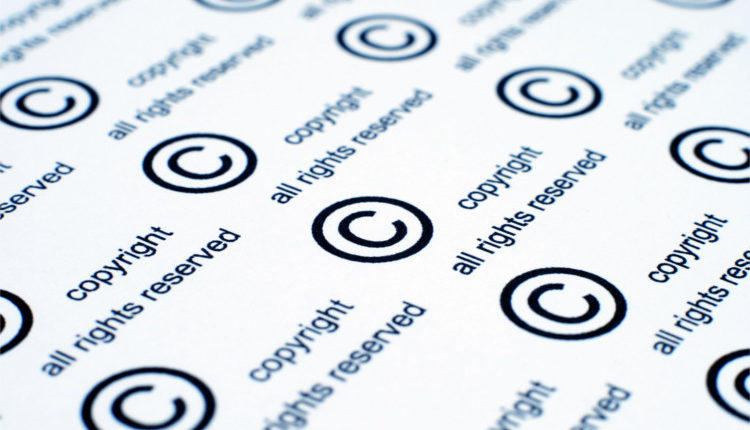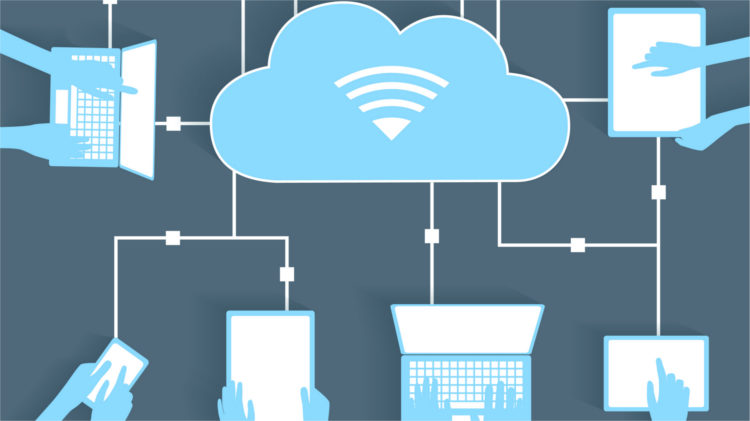Blockchain Technology | More Than Your Cryptocurrency Wallet
Okay, we’ve all heard of Bitcoin at this stage. Whether it’s through the ransom from last year’s WannaCry attack or the articles about tracking down thousands worth of lost bitcoins, it’s been ubiquitous in the news over the last year. It seems everyone with even the tiniest bit of programming knowledge is shouting from the rooftops that they bought €5 worth in 2015 and it must be worth at least €10 by now. Cryptocurrencies as a financial investment have seemingly been the main use so far although the anonymity of transactions with cryptocurrencies such as Bitcoin or Ethereum has made them popular with the more, ahem, dark dealings of the web. It takes almost an hour for transactions to fully go through meaning it’s unlikely you’ll be whipping out your crypto wallet any time soon to pay for your morning coffee. So while there are a couple of physical machines to buy Bitcoin at, such as this one on Abbey Street, and a handful of businesses which will accept it as currency, like flight broker Expedia; cryptocurrencies, for the most part, can seem a bit impractical for most people’s day to day lives.
Avid fans of cryptocurrencies believe the power and future Bitcoin et. al. lies far beyond bubble and bust markets, though. The blockchain is the technology that allows Bitcoin and some other cryptocurrencies to function and it’s this innovation that has really captured imaginations as a revolutionary concept that could disrupt society and its current structures. Initially conceived as the backbone of Bitcoin in 2009 by the creator going by the pseudonym Satoshi Nakamoto; the blockchain was a proposed alternative to the sluggish, opaque and government-controlled centralised banking system. At a fundamental level, the blockchain performs the same task as the banks, it keeps a record of all the transactions between people in a giant balanced ledger. We all know that when you get your wages every month, a wad of cash hasn’t actually left the company’s vault and landed in yours, á la Gringotts. The bank just writes in its ledger, that this account now has €X and this one has €Y.

Alright, it’s a massive complex digital ledger system that links with other banks and governments, but still, the basic concept is there. Even though a straw poll would struggle to find one person to say they trust bankers, the only reason transactions can happen is because everyone trusts the big, centralised banks. We assume the bank is making sure that the ledger is balanced; that money in one account comes out of another account and doesn’t appear or disappear in between. The blockchain aims to do the same thing, value in one account for value out another but without having to trust a black box bank to keep account of it.
What is a blockchain and how does it work?
The blockchain uses a decentralised ledger approach. There are thousands of copies of this ledger, all the exact same, on computers (called nodes) all around the world. If you’ve got some bitcoin or other crypto wealth, you’ve got a public key, some letters and numbers, which is on the ledger next to how much you own. You’ve also got a private key, which you keep secret. Every time you request a transaction, multiple computers on this network scan back through the ledger with the public key to find your entry and if you’ve got enough to make this transaction.
If you do, great, as long as the request was made with a matching private key, the transaction is verified. When at a couple nodes verify this transaction, it can be packaged with other transactions requested around the same time and added to the ledger as a block. The block contains the details of transactions just verified and also a cypher of the details in the block immediately before it. This is what makes it a block ‘chain’ and also what makes it a secure, immutable record. The way in which that cipher is generated means that if someone tries to chance fraudulently changing their balance in the ledger, even so much as a comma difference in the preceding block would result in a completely different cipher in the new block, which wouldn’t match what all the other nodes have in their ledgers.
The process of adding the block to the blockchain requires some complex calculations and it’s here where the ‘mining’ of bitcoin comes in. So, we have a decentralised record, which it is extremely difficult to erase or alter, which at the moment is used to transfer currency.
The blockchain is not limited to currency, though. Every month more and more start-ups are popping up which are using the blockchain in all aspects of life. The ability to have a decentralised but trustworthy record could revolutionise any industry or sector that uses data, which if you think about it, is just about every one.
Education

Have you ever been applying for a job or a course, only to be told you’ve got to stump up the ‘original documents’ of your qualification or degree? Get on the next bus home, you’ve got to dive through years of debris to find a piece of paper you were handed years ago while wearing a stupid hat. For some, it’s even more difficult, if you’ve been displaced from your home through conflict or disaster for example, there may be no way of verifying your original document with the school or university as it’s been closed down or the records have been lost. The parchment exists, you’ve got the knowledge but it’s not accepted and you can’t apply for that job or course.
The blockchain could revolutionise this archaic process making it easier, faster and less cumbersome to access and verify transcripts and qualifications. You wouldn’t have to retrieve and post physical documents since your entire record could be held on the blockchain, easily accessed from anywhere when you attach your public key to your application. Since this blockchain ledger would be decentralised, ideally across the entire world, you wouldn’t have to worry about records in your home institution being destroyed and jeopardising the future acknowledgement of the work you’ve put in. Of course, most importantly, Mam is happy she can keep your cert in a frame on the wall, next to your first day of school photo.
Healthcare

Hardly a day goes by where we don’t hear about healthcare. How costly it is, how overworked nurses, doctors and other staff are and how much the system needs an overhaul. The blockchain could make some serious progress in healthcare.
If you had a personal health blockchain, every time went to the doctor or hospital a new block could be added with details of the visit. The next time you had to access medical care, no matter if it was your local GP, the pharmacist down the road or A&E miles from home, they could easily and quickly access your entire health history and decide on a course of action. This would prevent accidental prescription of drugs you could be allergic too, or treatment which could interfere with anything you’re already taking. It could inform a doctor if you’ve presented with symptoms like the current ones previously which could lead to earlier diagnoses.
The current amount of administrative work for each patient is forcing HSE staff to spend more shift hours filing and less caring for patients. The blockchain could provide a secure, speedier way to keep these records as meticulous as they need to be.
IP & Copyright

Instagram has given us so many things as a platform, filters for the unphotogenic, endless memes for the creative geniuses of our times and facilitating the blatant stealing and sharing of artist’s works.
Most illustrators or photographers are happy to have people appreciate their images, many set up their own social media accounts for this purpose. There’s a difference, though, between a friend or fan sharing a piece with your name and link in the description and someone taking your art and sharing it as their own.
Even worse is when big-scale retailers like Forever 21, Zara or even the Kardashians themselves are alleged to be selling thousands of products with slogans and designs that look suspiciously like the ones you’ve created. It can be easy to believe that this is just the way the internet works, but it leaves us with less and less artists being able to pay for the time and materials it takes to make the art and, in the end, with less art.
New start-ups like Binded and ascribe are trying to harness the blockchain to give back control to digital artists. It works similar to how registering copyright and patents works today, but much less expensive, much quicker and making it a lot easier to track where your work is popping up on the web.
You register your file with the blockchain IP site. They link an encrypted summary of your file to a blockchain block, providing a definitive timestamp for when that work was created and who created it. A little, encrypted way of tracking your work is also buried in the file so if it does make its way out into the web, you’ll know about it and be able to find it. You can create as many versions as you want, and share them as much or as little as you like. In the future, you could even set up ‘smart contracts’ where, if someone wants to own a copy or share the work, the file automatically charges the customer when they download it and deposits your fee into your account.
The Cloud
The name and nature of Cloud Computing can often make it seem like your data and photos are just floating around the air waiting for you to pluck them out of the sky with your phone or laptop. The reality is, however, that cloud storage is really just asking companies like Apple, Google or Dropbox if you can keep your files on their servers instead of your own hard drive.

For all intents and purposes, these function like giant, internet-connected USB drives for us all, but they use huge amounts of space and energy. The Amazon data centre in Walkinstown takes up 20,739 sq metres and could consume as much energy as the whole of Waterford at peak times. In addition to this, the security of your data and the speed with which you can access your files is dictated by the private company that owns that server.
Startup Storj is looking at the decentralised nature of blockchain cryptocurrencies and saying, why can’t we do this with cloud computing? In a nutshell, everyone signed up to the Storj network shares whatever storage they have on their home system. The files you upload are shredded to many tiny files which are then encrypted and finally distributed between all the networked computers. If you have more space than you need, you can rent out your extra storage and vice versa. Since the data is decentralised, your files are more secure than if you had it all in one place and your download speed doesn’t depend on the speed of the Wifi connection and traffic at the data centre.
Tip of the Iceberg
These examples are just the tip of the iceberg when it comes to blockchain and decentralised technology, however. Startups like Golem plan to sign up thousands of computers to create crowdsourced supercomputers for rent. There’s talk of blockchain-protected 3D designs that anyone with access to a 3D printer can buy and print. Some companies like ShoCard even think we could move to blockchain-backed IDs and Passports.
Like with all new technologies, it will only really take off once it gets a big enough following. This is especially true for blockchain-based innovations as they rely on a large, disparate network of users just to function.
Governments and big companies are showing more and more interest as the buzz around cryptocurrencies reaches fever pitch, so who knows what we could be using the blockchain for in twenty years’ time? The original blockchain cryptocurrency itself, Bitcoin, is even coming full circle with initiatives like the Lightning Network. These aim to make the speed and ease of small transactions easier, which they believe will lead to us being able to buy our morning coffee with Bitcoin, after all.
Featured Image Photo by Andre Francois on Unsplash
